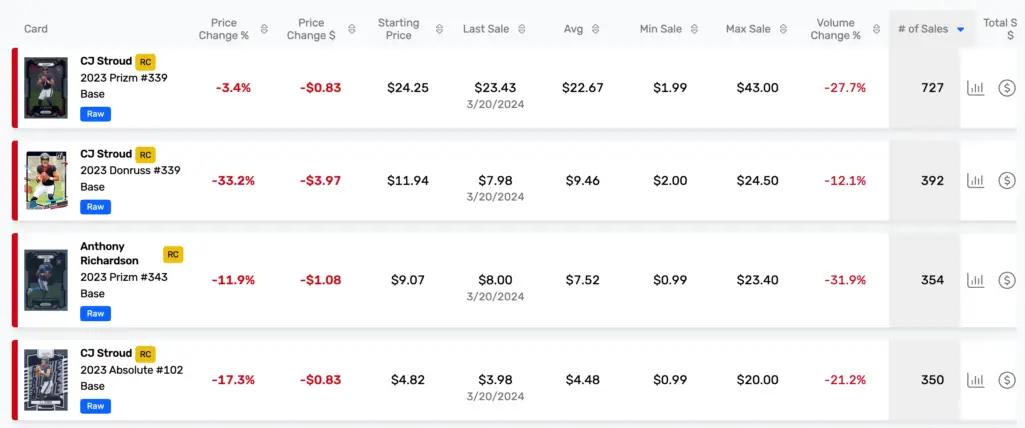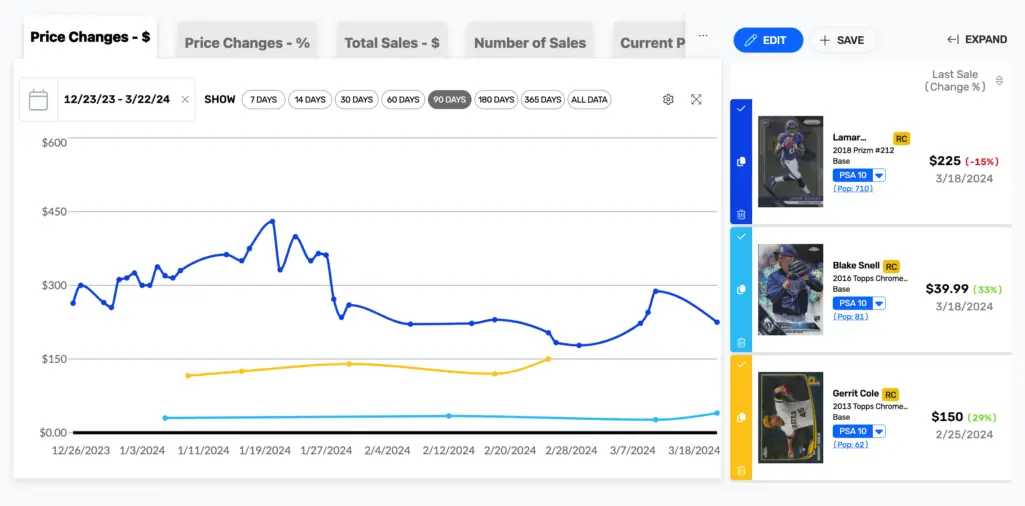 Ryan Barone (@ballcardgenius, Card Expert) is a lifelong member of the hobby. He has been quoted in PSA Magazine, and his content has regularly been mentioned in “Quick Rips” (the Topps RIPPED Newsletter) and across other hobby publications. hello@ballcardgenius.com; Last Time Ago LLC dba Ballcard Genius.
Ryan Barone (@ballcardgenius, Card Expert) is a lifelong member of the hobby. He has been quoted in PSA Magazine, and his content has regularly been mentioned in “Quick Rips” (the Topps RIPPED Newsletter) and across other hobby publications. hello@ballcardgenius.com; Last Time Ago LLC dba Ballcard Genius.
Affiliate Disclosure: This post contains affiliate links. As I am a part of the eBay Partner Network and other programs, if you follow these links and make a purchase, I’ll receive commission. As an Amazon Associate, I earn from qualifying purchases.
To say that not all cards are created equal is an understatement. I can spend hours on the differences between cards, even of the same players, and even those that look nearly exactly alike but are worlds apart in terms of value.
For today, though, I’m thinking about baseball cards vs. football cards. So, let’s crack open this box and sift through what sets these two cardboard giants apart.
Quartebacks rule the gridiron, and On cardboard.
In football cards, quarterbacks are king. It’s simple: they run the show on the field, and they dominate the market off of it. Thus, a rookie QB with a hint of potential can cause collectors to scramble faster than a broken play. Same goes for when a first string QB is traded or gets injured—the backup will most likely see a surge.
To give an example, when looking at the hottest football cards of the last 14 days, QBs are carrying the load:

It’s all about the impact QBs have—lead the team to victory, and card values skyrocket.
Pitchers are on top of the mound, but on the bottom of the baseball card market.
Compared to football, baseball’s much different. Here, pitchers are theoretically the QBs of the diamond – which can be argued – but my point is they control the flow of game with every pitch. The game doesn’t go until they go, just like a football play doesn’t begin until the QB gives the signal.
But when it comes to cards, pitchers often left in the value bullpen. Why? Maybe it’s the injury risk, or the fact that they play every fifth day at best. Whatever the reason, a star slugger will almost always outvalue an ace on the mound in the cardboard world.
There really isn’t a great way to compare, but just to give you an idea…Gerrit Cole and Blake Snell were the Cy Young Award winners in the American and National Leagues of 2023, respectively. Over in the NFL, Lamar Jackson won the MVP. Below you can see the difference in average sales values of their PSA 10 base Chrome and Prizm rookies.

And yes, I know Ohtani pitches and won MVP, but he is arguably the best player to every play the game, and would certainly be an anomaly.
Rookie card madness (it’s clear as mud).
In football cards, identifying a rookie card Is fairly clear cut. The player’s rookie season equals rookie cards, period. This clarity makes it easy for collectors to chase after the next big thing without getting tangled in definitions. Well, to play devil’s advocate, there are draft picks cards, too, but still—everything is lumped into the rookie card category, but simply separated by pro or college uni.
Baseball, though? It’s a whole different ballgame, literally. “1st Bowman” cards throw major curveballs. These cards might show up years before a player steps onto a Major League field, creating a split between “1st Bowman” and true rookie cards. It’s a mix-up that leaves newbies scratching their heads and veterans explaining the nuances over and over. Both have their place in a collection, but knowing the difference is key to playing the game.
(Not to mention all of the discussion that takes place when trying to figure out when exactly a player will have a Topps flagship rookie, both in terms of the year of the card and the particular release (series 1, series 2, and update).
There is Topps and there is Panini.
Last, and perhaps most glaring in the comparison of baseball cards and football cards, the manufacturer. When you think of baseball cards, you think Topps, and when you think football cards, it’s all Panini.
Now, are there Panini baseball cards? Yes! They just dont’ have logos, and lately, are only of retired players. And are there Topps football cards? Well, there might be more in the future, but for now there are Bowman University college cards.
This clear separation only makes the difference between the two sports’ card all the more glaring.
Boxing Things Up
Whether you’re all about the gridiron or the diamond, collecting is a passion for many, and there is room for collectors of all types. The differences between baseball and football cards highlight the unique cultures and values within each sport’s collecting community. From quarterbacks dominating the market to the rookie card conundrum and the digital age creeping into our collections, it’s a wild ride.
But hey, that’s what makes collecting so addicting! Each card, each player, tells a story, and whether you’re into the strategy on the field or the stats on the back of a card, there’s something for everyone.



